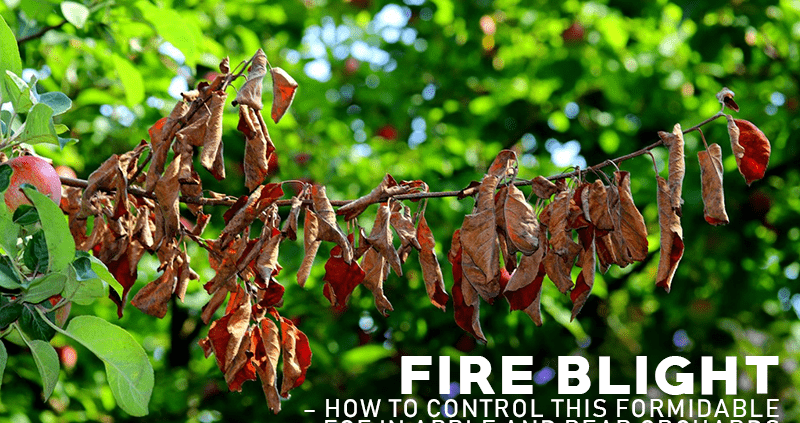Have you recently noticed those pesky cankers typical of fire blight in your orchard? Fire blight is one of the most common diseases afflicting apples and pear orchards, with around 200 species being susceptible to its damage. Young trees are most vulnerable with complete loss possible in just one season. Even in more established trees, fire blight can kill blossoms, fruit, shoots, twigs and branches. Symptoms can be present in bark, leaves, flowers, and roots from pre-blossom through to blossom and onto fruition.
Fire blight is most adept to happen when trees are in flower, the weather is warm (70-95?), and in humid environments. At temperatures below 70? and higher than 95?, bacterial growth is still present, but grows at slower rates. As a general rule, fire blight is most likely to take root in three weeks following petal fall. This generally happens during May and June in North America. The fire blight bacteria is perpetuated by insects like bees and flies, and can also be transferred during wind-blown rain. Further, diseased cells can survive in plant tissue from one season to the next.
Now, taking this into consideration you may be wondering what your options are to attack this plight, particularly what organic-safe options are out there. Pruning is an option, but presents risks during warmer months where fire blight can actually proliferate from pruning. Fortunately, Enviroselects offers Oxidate 2.0 which can prevent, cure, and even rescue apple and pear orchards from fire blight. Its active ingredient is hydrogen peroxide, and this oxidizing fungicide kills bacteria, fungal pathogens and spores present in apple and pear trees. It can also be used for crops including beans, berries, nuts, potatoes, and herbs among others.
After six applications, more than 70% of fire blight bacteria or fungus was under control (BioSafe Systems, 2012). It begins to work on contact with apple and pear plants or trees. It can be applied every 5-10 days for preventative purposes, every 3-5 days for curative purposes, and depending on the crop variety even more frequently for rescue purposes. It can be applied on field crops or in greenhouses to seeds, growing plants, and mature fruiting trees.
Apart from its successes, Oxidate 2.0 also boasts approval from both the Organic Materials Review Institute (OMRI) and the EPA. It’s safe for both growers and consumers with a 0-day pre-harvest interval, as well as a 0-hour restricted entry interval. With a 2-year shelf life, and no refrigeration necessary, it can also be safely used next season should any fire blight bacteria survive the winter. This product is available right on our website, with further information on the specific pathogens exterminated and related resources.



Leave a Reply
Want to join the discussion?Feel free to contribute!